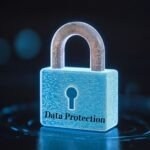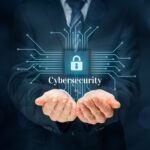Table of Contents
In a world where everything is becoming digital—our jobs, our social lives, our finances—it’s more important than ever to fortify your online defenses. Cybercriminals are lurking behind the scenes, constantly searching for vulnerabilities to exploit. But don’t worry, you don’t have to be a tech wizard to protect yourself. You just need to take some practical steps. This guide walks you through 20 tried-and-true ways to shield your digital life.
1. Use Strong, Unique Passwords for Every Account
You might be surprised how many people still use “123456” or “password” as their login credentials. Weak passwords are basically open doors for hackers. Even if your password isn’t obvious, using the same one across multiple sites is a huge risk. If one account gets compromised, all your other accounts are essentially up for grabs.
Importance of Password Diversity
Every website you log into should have its own strong, unique password. Think of it like a different key for every door in your house. If one key gets stolen, at least the intruder can’t open all the doors. That’s what password diversity offers—a barrier between a single data breach and total digital disaster.
Tips for Creating Secure Passwords
Creating secure passwords doesn’t mean memorizing a bunch of complicated gibberish. Use a password manager like LastPass, Bitwarden, or 1Password to generate and store them. A good password should:
- Be at least 12 characters long
- Include uppercase and lowercase letters
- Use numbers and special characters
- Avoid personal info like birthdays or pet names
And never, ever write them down on sticky notes or save them in plain text on your computer. That’s like locking your front door and leaving the key under the mat.
2. Enable Two-Factor Authentication (2FA)
Adding a second lock to your front door makes it twice as hard for someone to break in. That’s what Two-Factor Authentication (2FA) does for your online accounts. Even if someone steals your password, they’d still need access to your phone or email to get in.
How 2FA Adds an Extra Layer of Protection
2FA works by requiring two types of verification:
- Something you know (your password)
- Something you have (your phone or a security key)
This drastically reduces the chances of unauthorized access. A hacker might crack your password, but they probably don’t have your smartphone in their hand.
Best 2FA Apps and Methods
Here are some of the most trusted tools to get started with:
- Google Authenticator – Simple, free, and widely supported.
- Authy – Offers backups and multi-device sync.
- YubiKey – A physical security key for even higher protection.
- Microsoft Authenticator – Great for Windows users.
Wherever you can enable 2FA, do it. Your email, your bank, your social media—it’s a game-changer for keeping out intruders.
3. Keep Your Software and Devices Updated
You know those annoying update notifications you tend to ignore? They’re not just about new features. They’re actually critical for your security. Hackers exploit bugs in outdated software to gain access to your devices and steal your information.
Risks of Outdated Systems
Outdated operating systems and applications are gold mines for cybercriminals. They look for known vulnerabilities in older versions and use automated tools to exploit them. Whether it’s your phone, laptop, or router, leaving software unpatched is like walking around with your shoelaces untied—it’s just a matter of time before you trip up.
Automating Updates for Convenience
If you’re the forgetful type, don’t worry. Most systems allow you to enable automatic updates. This ensures you’re always running the latest, most secure version without lifting a finger. Just check these boxes:
- Enable auto-updates for your OS (Windows/macOS/Linux)
- Turn on automatic updates for your browser
- Keep apps like Adobe, Java, and Zoom up to date
- Update firmware on your router and smart devices
4. Install Reliable Antivirus and Anti-Malware Software
You wouldn’t leave your house without locking the door, right? Then why browse the internet without antivirus protection? Malicious software can infect your system through emails, websites, or downloads, stealing your data or even holding it for ransom.
Why Real-Time Protection Matters
Antivirus and anti-malware tools don’t just scan files—they monitor activity in real time to catch threats as they appear. They act like bodyguards for your devices, blocking shady behavior before it causes harm.
Recommended Tools for Home Users
You don’t need enterprise-grade software to stay safe. Here are a few excellent (and often free) choices:
- Malwarebytes – Great for both malware removal and real-time protection.
- Bitdefender – High detection rates and low system impact.
- Norton 360 – A full suite including VPN and identity protection.
- Windows Defender – Built into Windows and surprisingly effective.
Make sure it’s always turned on and updated. A dormant antivirus is about as useful as a rusted sword.
5. Secure Your Wi-Fi Network
Your home Wi-Fi is your gateway to the internet, but if it’s not secured properly, it could be an open invitation to digital intruders. Neighbors, hackers, or even bots could hijack your bandwidth, intercept your data, or infect your devices.
How to Set a Strong Router Password
Start by changing the default router username and password. Those credentials are public knowledge and can be easily found online. Use a complex password with a mix of letters, numbers, and symbols. Also, rename your network (SSID) to something generic—not your family name or address.
Benefits of WPA3 Encryption
Most modern routers offer WPA3, the latest and most secure Wi-Fi encryption standard. If your router only supports WPA2, that’s still okay—but avoid WEP at all costs; it’s outdated and easily cracked.
Other smart moves:
- Disable remote access and WPS (Wi-Fi Protected Setup)
- Create a separate guest network
- Regularly check for unauthorized devices
6. Be Wary of Phishing Scams
Ever received an email from your “bank” asking for personal info or a text from “Netflix” claiming your account is locked? Chances are, you were targeted in a phishing attempt. Phishing is one of the oldest and most successful tricks cybercriminals use to steal data.
How Phishing Works
Phishing scams often disguise themselves as legitimate communications. They might send you an email that looks like it’s from your employer, your bank, or even a government agency. The message usually contains a link asking you to update details, click on an invoice, or confirm login credentials. The moment you click or submit your info, you’ve just handed it to a scammer.
How to Avoid Phishing Attacks
Here’s how you can outsmart phishers:
- Double-check sender email addresses – Fake ones often look real at first glance.
- Never click suspicious links – Hover over them to see the real destination.
- Check grammar and spelling – Poor writing is a major red flag.
- Enable spam filters – Keep junk out of your inbox.
- Use anti-phishing browser extensions – Tools like Netcraft or Avast can alert you.
7. Use a Virtual Private Network (VPN)
Imagine walking around the internet with a giant invisible cloak. That’s basically what a VPN does. It encrypts your internet connection and masks your IP address, making it harder for anyone to snoop on your online activity.
Why You Should Use a VPN
VPNs are especially useful when you’re using public Wi-Fi, like at airports, cafes, or hotels, where hackers often set up fake networks or use packet sniffers to spy on your traffic. Even your internet provider can’t see what you’re up to when you’re behind a VPN.
Choosing the Right VPN
Not all VPNs are created equal. Free VPNs often sell your data or have slower speeds. Go for reputable paid options like:
- NordVPN
- ExpressVPN
- Surfshark
- ProtonVPN
Features to look for:
- No-log policies
- Fast, stable connections
- Kill switch (cuts your internet if the VPN drops)
- Multi-device support
Turn on your VPN every time you browse, especially when you’re away from your secure home network.
8. Back Up Your Data Regularly
Ransomware is one of the most damaging types of cyberattacks today. Hackers lock your data and demand payment to release it. If you’ve got a good backup system, you don’t have to pay a dime—you just restore everything from your backup.
Why Backups Are Crucial
Even beyond hacking, data can be lost due to hardware failure, theft, or natural disasters. Having a backup means you can recover quickly and continue life with minimal disruption. Think of backups like a digital insurance policy.
How to Back Up Your Data the Right Way
Use the 3-2-1 rule:
- Keep 3 copies of your data (1 primary + 2 backups)
- Store 2 backup copies on different devices (external hard drive, computer)
- Store 1 copy offsite (like cloud storage)
Top backup tools include:
- Google Drive, iCloud, Dropbox for cloud sync
- Backblaze or Carbonite for full-system backups
- External SSD or HDDs for local backups
Set up automatic backups so you never forget. It’s a set-it-and-forget-it approach that could save you from digital disaster.
9. Limit the Personal Information You Share Online
Every time you post a picture of your dog’s name, share your birthday, or tag your favorite restaurant, you’re giving away pieces of your identity. This data can be used by cybercriminals for social engineering or to guess your passwords and security questions.
The Dangers of Oversharing
Hackers don’t need your Social Security number to start wreaking havoc. A few key pieces of personal info can help them:
- Reset your online passwords
- Pretend to be you in phishing attacks
- Commit identity fraud
Think of personal data like puzzle pieces. The more you give away, the easier it is to complete the picture.
Tips for Staying Private
- Set your social media accounts to private
- Avoid sharing your full birthdate or location
- Don’t use pet names, favorite sports teams, or birthplaces in passwords
- Be mindful of geotagging photos
- Regularly review your privacy settings
10. Monitor Your Accounts and Credit Reports
Let’s face it, even the best security setup isn’t foolproof. That’s why it’s important to be proactive in monitoring your digital footprint. The earlier you catch suspicious activity, the faster you can act to prevent serious damage.
Why Monitoring Matters
You might not know if someone opened a credit card in your name or hacked your account unless you’re actively checking. That’s where monitoring comes in—it’s like having a digital security camera on your identity.
What to Monitor and How
Start with:
- Bank and credit card transactions – Look for charges you don’t recognize.
- Email activity – Check for unfamiliar logins or password reset emails.
- Credit reports – Get your free reports from Experian, Equifax, and TransUnion.
Tools to help include:
- Credit Karma – Free credit monitoring
- HaveIBeenPwned.com – Alerts you if your email is in a data breach
- LifeLock or IdentityForce – Full identity protection services
11. Lock Down Your Mobile Devices
Our smartphones carry more personal data than most laptops these days—banking apps, emails, photos, social media, and more. If your phone gets lost or stolen and it’s not properly secured, someone could gain access to your entire digital life.
Why Mobile Security is Non-Negotiable
Your mobile device is a goldmine for hackers and thieves. Without the right safeguards, they could:
- Access sensitive messages and emails
- Use saved passwords to log into accounts
- Drain your financial apps or crypto wallets
- Reset passwords by accessing verification texts
Steps to Secure Your Phone
- Set a strong screen lock – Use a 6-digit PIN, pattern, or biometric option like fingerprint or face ID.
- Enable “Find My Device” or “Find My iPhone” – This lets you track, lock, or wipe your phone remotely.
- Encrypt your device – Most modern smartphones encrypt data by default, but double-check settings to ensure it’s on.
- Disable Bluetooth and Wi-Fi when not in use – These can be exploited when left on unnecessarily.
- Limit app permissions – Only allow apps to access necessary data and functions.
Mobile phones are easy targets, but with a few simple tweaks, you can turn yours into a digital fortress.
12. Use Encrypted Messaging Apps
Not all communication apps are created equal. Some collect metadata. Others have weak security. And a few don’t encrypt your conversations at all. If privacy matters to you (and it should), encrypted messaging apps are the way to go.
Why End-to-End Encryption Matters
End-to-end encryption means that only you and the recipient can read the messages. Even the app providers can’t decrypt your data. Without it, your conversations could be intercepted by hackers, governments, or even the app company itself.
Best Encrypted Messaging Apps
Here are a few secure apps trusted by cybersecurity experts:
- Signal – Open-source, zero ads, and industry gold standard for encryption.
- WhatsApp – Offers end-to-end encryption, but is owned by Meta, which raises some concerns.
- Telegram – Use “Secret Chats” for full encryption (note: regular chats are cloud-based).
- iMessage – Great if both users are on iPhones, though not cross-platform.
Avoid SMS for sensitive conversations—it’s like sending a postcard that anyone can read.
Encrypted messaging is like sealing your letters in a vault before mailing them. It adds that crucial extra layer of protection.
13. Protect Your Browsing with Privacy-Focused Extensions
Every time you visit a website, trackers try to gather data on you—what you click, how long you stay, what you’re interested in. Over time, this paints a detailed profile of your behavior. Privacy-focused browser extensions help block these snoops.
Why Browser Security Is Critical
Hackers often use malicious ads, pop-ups, and redirects to inject malware or steal your data. Even reputable websites can unknowingly host infected ads. Extensions act like bodyguards, keeping these threats at bay.
Top Privacy Extensions to Use
- uBlock Origin – Blocks ads and trackers without slowing down your browser.
- Privacy Badger – Developed by the EFF to block invisible trackers.
- HTTPS Everywhere – Forces websites to use secure connections.
- ClearURLs – Removes tracking elements from URLs.
14. Educate Yourself and Your Family About Online Safety
Even if you’ve got the tightest security setup in place, a single click from a family member can bring it all crashing down. That’s why awareness and education are some of the most powerful tools in your cyber defense toolkit.
Why Cybersecurity Awareness is Key
Hackers often exploit human behavior—not just software bugs. Social engineering, phishing, and scams target the least tech-savvy people in your home. A well-informed user is harder to trick.
What You Should Teach and Learn
- Recognize phishing emails – Show examples of what to look for.
- Strong password habits – Teach kids to use password managers too.
- Responsible social media use – Emphasize privacy and caution.
- Device hygiene – Explain why updates and antivirus matter.
There are even fun online games and quizzes to help children learn about cyber safety. Try resources like:
- Google’s “Be Internet Awesome”
- CyberWise
- StaySafeOnline.org
Your family’s safety depends on everyone knowing the rules. Make cybersecurity a shared responsibility.
15. Regularly Audit Your Digital Footprint
We leave digital breadcrumbs everywhere we go online—social posts, registrations, photos, and more. These fragments can be pieced together to create a detailed portrait of you. It’s time to clean up.
Why Digital Housekeeping is Important
If you’ve ever signed up for a forum, shopped on a sketchy site, or posted too many vacation selfies, your info might still be floating around. Old accounts and public data can be exploited in identity theft or targeted attacks.
How to Audit and Reduce Your Footprint
- Google yourself – See what others can learn from a quick search.
- Delete old accounts – Use tools like JustDelete.Me to find deactivation links.
- Limit public profiles – Hide age, location, and contact info when possible.
- Remove old photos or posts – Especially anything with sensitive data.
- Opt-out of data brokers – Sites like Spokeo, Whitepages, and PeopleFinder allow removal requests.
Schedule this audit once every few months. It’s like spring cleaning for your online life—refreshing and protective.
16. Use Biometrics When Available
Your fingerprint, face, or even your voice can act as a powerful password—one that’s unique to you and nearly impossible to replicate. Biometrics have become a game-changer in modern cybersecurity, adding a personal layer of defense to your devices and accounts.
Why Biometrics Boost Security
Biometric authentication is difficult to fake. Unlike passwords, which can be guessed, leaked, or stolen, your physical traits offer much stronger resistance to hackers. Think of it this way: no one else has your exact fingerprint or face structure. That uniqueness makes biometric locks incredibly secure.
Where and How to Use Biometrics
- Smartphones – Use fingerprint or face unlock instead of PINs.
- Laptops – Enable fingerprint login (Windows Hello, Mac Touch ID).
- Password Managers – Many now allow biometric logins for added protection.
- Smart Home Devices – Voice recognition can add an extra security layer.
Just be sure to back up with a strong PIN or passphrase in case the biometric feature fails or isn’t available in all situations.
Biometrics aren’t perfect (nothing is), but they’re a massive leap forward in personal security.
17. Beware of Public Wi-Fi
Free Wi-Fi is everywhere—cafes, airports, hotels—but “free” can come at a price. Public networks are often unsecured, making them prime hunting grounds for cybercriminals who snoop on connections or create fake hotspots.
What Makes Public Wi-Fi Dangerous
On an open Wi-Fi network, other users can intercept your traffic using simple tools. That means if you log into your email, bank, or social accounts, someone could be watching or recording everything you do. Scary, right?
How to Safely Use Public Wi-Fi (If You Must)
- Use a VPN – This encrypts your data so snoopers can’t read it.
- Avoid logging into sensitive accounts – Wait until you’re on a secure connection.
- Turn off sharing options – Especially file and printer sharing.
- Use HTTPS websites only – These encrypt communication (look for the lock icon).
- Disable auto-connect – So your device doesn’t join rogue networks automatically.
When possible, use your mobile hotspot instead. It’s way safer, and you control it.
18. Disable Unused Services and Ports
Many devices and apps run background services that you might not even know about. These can act as open windows for hackers to sneak through, especially if you’re not using them.
Why It Matters
Every open port or enabled service increases your attack surface. The more things you have running, the more doors you leave open. Cybercriminals often scan networks for these hidden vulnerabilities.
What You Should Turn Off
- Remote Desktop Protocol (RDP) – If not needed, disable it.
- Bluetooth and Wi-Fi – Turn off when not in use.
- Universal Plug and Play (UPnP) – Disable on your router unless needed.
- Old or inactive browser extensions – Remove those you don’t use.
This reduces the number of “entry points” to your system, making you less vulnerable without affecting your daily use.
19. Use Role-Based Access Control (RBAC) for Work or Teams
If you manage a team or run a business, one of the biggest risks is giving people more access than they actually need. That’s where Role-Based Access Control (RBAC) comes in—limiting permissions to only what’s necessary.
Why RBAC Prevents Insider and External Threats
People make mistakes. Sometimes employees click on malicious links, and sometimes they’re targeted directly. By restricting access, you limit the damage that can be done if an account is compromised.
For example:
- An intern doesn’t need admin rights.
- A content writer doesn’t need access to financial data.
RBAC ensures everyone has just enough access to do their job—and nothing more.
Best Practices for RBAC
- Define roles clearly – Admin, editor, viewer, etc.
- Review permissions regularly – Especially when roles change or people leave.
- Use audit logs – Monitor who accesses what and when.
- Enforce the principle of least privilege – Give the lowest level of access by default.
This is especially vital for small businesses, schools, and remote teams where one compromised account can wreak havoc.
20. Stay Informed on the Latest Threats
Cybersecurity isn’t a set-it-and-forget-it game. Threats are constantly evolving. What worked a year ago might not work today. Staying informed ensures that your defenses are always one step ahead of hackers.
How to Stay Cyber-Savvy
- Subscribe to trusted cybersecurity blogs – Like Krebs on Security, Threatpost, or Naked Security.
- Follow alerts from CERT or your country’s cybersecurity agency.
- Join Reddit communities – Subreddits like r/cybersecurity often highlight new threats.
- Use Google Alerts – Track terms like “data breach,” “phishing scam,” or “ransomware.”
Knowledge is your secret weapon. The more you know, the better choices you make when it comes to protecting yourself online.
Conclusion
The digital world can be dangerous, but you don’t have to be an IT expert to stay safe. By following these 20 effective strategies, you can build a rock-solid defense system around your personal and professional online presence. Start with the basics—like using strong passwords and turning on 2FA—and work your way up to advanced tactics like RBAC and regular security audits.
Cybersecurity is an ongoing journey, not a one-time fix. The key is to stay vigilant, update your defenses, and educate yourself and those around you. Every step you take brings you closer to a more secure, more confident digital life.









